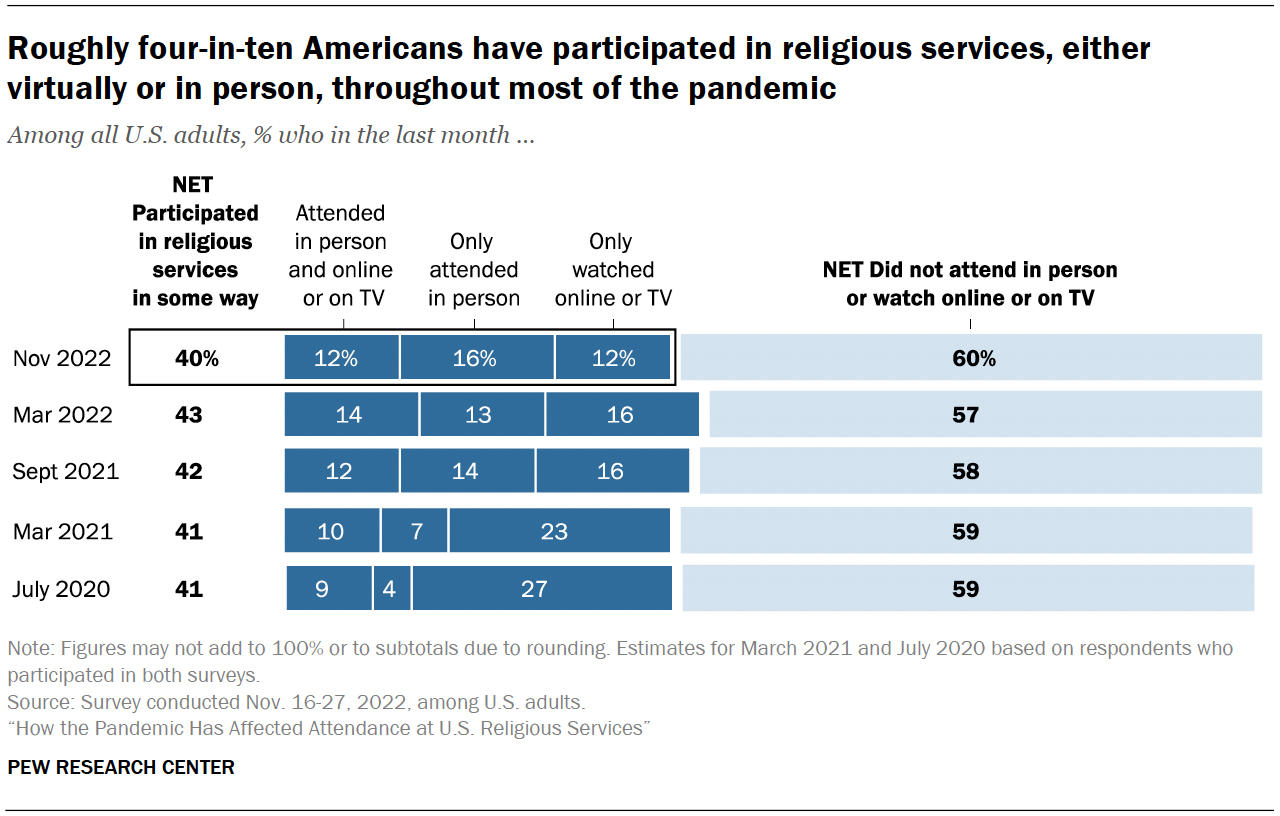
(RNS) — In the midst of the COVID-19 pandemic, religious leaders worried that lockdowns and the move to online services would accelerate already declining church attendance and usher in what some called a “religion recession.”
A new study from Pew Research suggests that’s probably overstated.
The study found that the share of U.S. adults who generally say they attend religious services at least once a month dropped from 33% in 2019, before the COVID-19 outbreak, to 30% in 2022.
That may be more consistent with a longer-term trend of gradual religious decline than a dramatic change in people’s churchgoing habits.
Or, the researchers speculated, it may also be due to a short-term impact of the pandemic on Black Protestants, who saw the biggest decline in attendance of all religious groups surveyed. The share of Black Protestants who say they generally attend religious services at least once a month was 15 points lower between 2022 and 2019 (46% vs. 61% then).
The study’s last survey, in November, surveyed 11,377 U.S. adults. Its margin of error was plus or minus 1.5 percentage points.
Beginning in July 2020, Pew began asking U.S. adults whether they attended religious services in person in the prior month and, separately, whether they took part in services virtually.

“Roughly four-in-ten Americans have participated in religious services, either virtually or in person, throughout most of the pandemic” Graphic courtesy of Pew Research Center
In five surveys taken between July 2020 and November 2022, attendance remained consistent: 41% of U.S. adults said they participated in religious services in person or online in July 2020 and 40% said they participated in services in person or online in November 2022, when the last survey was taken. (As the pandemic ran its course, the percentage of Americans participating virtually dropped and in-person attendance rebounded and then appears to have plateaued.)
Over the course of 2022, about 28% of Americans said they participated in religious services in person.
But the definitive answer as to the effect of the pandemic on religious service attendance may not yet be known.
Another national study of 20 denominational groups now being conducted by the Hartford Institute for Religion Research looks at the question differently. It asks congregational leaders about attendance rather than individuals.
So far, that study, called Exploring the Pandemic Impact on Congregations, or EPIC, has found that congregational attendance (both in person and virtual) is down 12% from 2019.
One reason for the difference in methodology? Researchers have long known that people tend to inflate reports of their religious attendance. In a 2014 study — humorously titled “I Know What You Did Last Sunday” — the Public Religion Research Institute found that “every subgroup of Americans inflates their levels of religious participation.”
“We ask pastors and church leaders what it looks like for them. What’s the reality when they look out at the church pews?” said Scott Thumma, the principal investigator. “That’s not always the same picture.”
